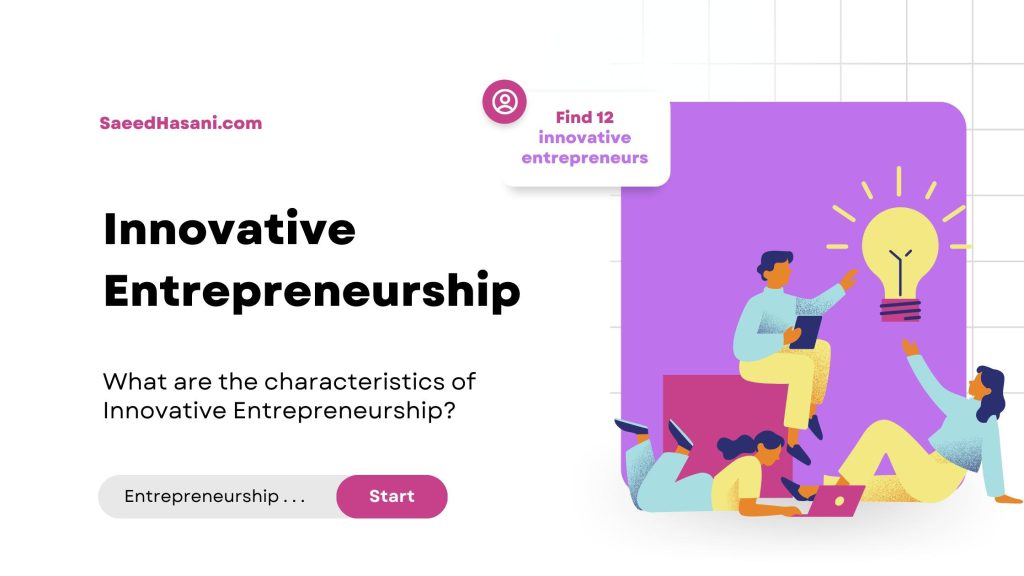Gentle Leadership: 15 Ways to Become a Gentle Leadership + 15 Quotes!

Are you looking to transform your leadership style to inspire and motivate your team more effectively? Discover the power of gentle leadership, a compassionate approach that prioritizes empathy, understanding, and support to create a thriving work environment.
Dive into this blog post to learn how gentle leadership can enhance team cohesion, boost job satisfaction, and lead to superior performance, all while maintaining clear goals and accountability.
Content Overview:
What is gentle leadership?
Gentle leadership is a leadership style that emphasizes empathy, understanding, and support rather than authority, control, or power. It’s built on the principle of leading by example and influencing others through positive relationships, open communication, and emotional intelligence.
Gentle leaders focus on creating a supportive environment where team members feel valued, heard, and motivated to contribute their best work.
Key characteristics of gentle leadership include:
- Empathy: Understanding and sharing the feelings of others. Gentle leaders strive to see situations from the perspectives of their team members and respond to their needs and concerns with compassion and understanding.
- Active Listening: Being fully present and attentive to the speaker, showing genuine interest in their thoughts and feelings. This builds trust and encourages open communication within the team.
- Encouragement and Support: Providing support and encouragement rather than criticism or command. Gentle leaders motivate their teams through positive reinforcement and recognition of their efforts and achievements.
- Collaboration: Encouraging teamwork and collaboration over competition. Gentle leaders value each team member’s input and foster an environment where everyone can contribute their ideas and strengths.
- Transparency and Honesty: Being open and honest about decisions, challenges, and the reasoning behind certain actions. This transparency helps to build trust and integrity within the team.
- Flexibility and Adaptability: Being open to change and new ideas, and willing to adapt leadership styles to suit the needs of the team and the situation.
- Respect for Others: Showing genuine respect for team members’ ideas, feelings, and contributions. This creates a culture of mutual respect and reduces conflicts.
- Leading by Example: Demonstrating the behaviors and work ethic they wish to see in their team members. Gentle leaders are role models for their teams.
Gentle leadership is particularly effective in environments where creativity, collaboration, and innovation are key. It can lead to higher job satisfaction, improved team cohesion, and better overall performance.
However, it’s also important for gentle leaders to maintain clear goals, expectations, and accountability to ensure that empathy and supportiveness do not come at the expense of productivity or results.
Example of gentle considerate and loving leadership
An example of gentle, considerate, and loving leadership can be seen in the approach taken by Jacinda Ardern during her tenure as the Prime Minister of New Zealand.
Ardern’s leadership style, particularly evident in her response to the Christchurch mosque shootings in March 2019 and the COVID-19 pandemic, embodies these qualities.
Jacinda Ardern’s Leadership During the Christchurch Mosque Shootings
Following the tragic Christchurch mosque shootings, Ardern’s immediate response was marked by empathy and solidarity. She met with the families of the victims and the Muslim community, wearing a hijab as a sign of respect.
Her actions conveyed a powerful message of unity and compassion. She reassured the affected community that they were part of New Zealand’s society and that the entire nation stood with them.
This considerate approach helped to comfort a grieving community and foster a sense of belonging and security.
Ardern’s Leadership During the COVID-19 Pandemic
During the COVID-19 pandemic, Ardern demonstrated a blend of decisive action and compassionate communication. She implemented strict lockdown measures early on, which were crucial in controlling the spread of the virus.
What set her apart was her regular, transparent communication with the public, where she shared not only the government’s actions but also empathized with the challenges faced by New Zealanders.
Ardern’s “Be kind” message encouraged the nation to look after each other, emphasizing the importance of community and collective effort over individualism.
Key Aspects of Ardern’s Gentle, Considerate, and Loving Leadership
- Empathy and Compassion: Ardern consistently showed genuine concern for the well-being of all New Zealanders, directly addressing their fears and uncertainties with empathy.
- Solidarity and Inclusiveness: She demonstrated an inclusive approach, emphasizing unity and the importance of standing together in times of crisis.
- Communication: Ardern’s communication was clear, transparent, and filled with kindness, which helped to build trust and cooperation among the public.
- Decisiveness: Despite her gentle approach, Ardern was decisive in her actions, showing that kindness and effectiveness in leadership are not mutually exclusive.
Ardern’s leadership exemplifies how gentle, considerate, and loving leadership can be powerful and effective, especially in times of crisis. Her approach highlights that leading with kindness and compassion can inspire solidarity, foster resilience, and achieve positive outcomes for society as a whole.
Should a leader be gentle?
Whether a leader should be gentle depends on various factors, including the organizational culture, the nature of the team or community being led, the specific challenges faced, and the personal leadership style of the individual.
Gentle leadership, characterized by empathy, understanding, and support, offers numerous benefits but also has its limitations depending on the context. Here’s a breakdown of when and why a leader should consider adopting a gentle approach:
Benefits of Gentle Leadership
- Fosters a Positive Work Environment: A gentle leader can create a supportive and positive work culture that boosts morale and job satisfaction.
- Encourages Open Communication: Team members may feel more comfortable sharing ideas and concerns with a leader who is approachable and understanding, leading to more innovative solutions and early detection of potential issues.
- Builds Trust and Loyalty: Gentle leadership can lead to deeper trust and loyalty among team members, as they feel valued and respected.
- Enhances Team Collaboration: A gentle approach can encourage a more collaborative team environment, where members are motivated to support each other and work together towards common goals.
- Improves Adaptability: Leaders who are empathetic and flexible can help their teams navigate change more effectively, as they are attuned to the team’s concerns and can adjust strategies accordingly.
Limitations of Gentle Leadership
- Risk of Being Perceived as Weak: In some contexts, particularly those that value hierarchy and authority, a gentle approach may be misconstrued as a lack of strength or decisiveness.
- Challenges in Enforcing Accountability: There’s a risk that gentle leadership might be interpreted as leniency, potentially leading to issues with discipline and accountability if not balanced correctly.
- May Not Suit Every Situation: In crisis situations or when quick, decisive action is required, a more assertive leadership style might be necessary to achieve immediate results.
Balancing Gentle Leadership
The key to effective leadership often lies in balancing gentleness with other qualities like assertiveness, decisiveness, and strength.
A leader can be gentle and empathetic, yet also firm and decisive when the situation calls for it. Adaptability in leadership style, based on the needs of the team and the demands of the situation, is crucial for success.
What does a gentle leader do?
A gentle leader adopts a leadership style centered on empathy, respect, and understanding, aiming to create a positive and supportive environment for their team. Gentle leadership is characterized by several key actions and practices:
1. Demonstrates Empathy
A gentle leader takes time to genuinely understand and share the feelings and perspectives of their team members. This involves recognizing and responding to the individual needs and emotions of each person.
By showing genuine concern for the well-being of their team, a gentle leader fosters an environment where people feel valued and understood.
2. Practices Active Listening
Active listening is a hallmark of gentle leadership. Such leaders encourage open dialogue and ensure that everyone feels safe to voice their thoughts and concerns. By valuing and attentively listening to the contributions of all team members, a gentle leader builds a culture of trust and mutual respect.
3. Fosters a Culture of Support and Encouragement
Instead of focusing on criticism, a gentle leader emphasizes positive reinforcement and constructive feedback. They inspire and motivate their team by recognizing achievements and offering encouragement.
This approach helps individuals feel valued and motivated, contributing to a positive and productive team environment.
4. Leads by Example
Gentle leaders embody the values of kindness, respect, and empathy they advocate for. Through their actions and decisions, they demonstrate integrity and set a positive example for their team.
This congruence between words and actions builds trust and inspires team members to emulate these behaviors.
5. Prioritizes Collaboration Over Competition
Success is seen as a collective effort under gentle leadership, with a strong emphasis on teamwork and leveraging diverse strengths.
Gentle leaders work to minimize hierarchical barriers, fostering a sense of unity and partnership within the team. This approach encourages collaboration and leverages the collective talents and perspectives of the team for better outcomes.
6. Engages in Constructive Conflict Resolution
Gentle leaders approach conflicts with compassion, focusing on understanding and resolving issues in a respectful and constructive manner.
They strive to maintain a harmonious work environment by mediating disputes and encouraging mutual respect among team members. This approach helps to prevent conflicts from escalating and maintains team cohesion.
7. Exhibits Emotional Intelligence
Emotional intelligence is crucial for gentle leaders. They possess self-awareness and the ability to regulate their emotions, preventing personal feelings from adversely affecting their leadership.
By understanding the emotional dynamics of their team, gentle leaders can adjust their approach to maintain morale and productivity, ensuring a positive work atmosphere.
By incorporating these practices, gentle leaders are able to build resilient and high-performing teams. Teams under gentle leadership feel respected, valued, and motivated, which contributes to a positive work culture, enhances employee satisfaction and loyalty, and drives successful outcomes.
How do I become a gentle leader at work?
Becoming a gentle leader at work is a transformative process that involves developing a leadership style characterized by empathy, respect, understanding, and emotional intelligence. Here are steps to guide you on this path:
1. Cultivate Empathy
To cultivate empathy, strive to genuinely understand the perspectives, feelings, and experiences of your team members. This involves actively engaging in conversations where you not only ask about their work but also express interest in their personal well-being.
Being fully present during these interactions, listening intently, and responding with compassion and understanding can help you connect on a deeper level, fostering a trusting and supportive team environment.
2. Develop Emotional Intelligence
Developing emotional intelligence is critical for gentle leadership. It begins with self-awareness, recognizing your own emotions, strengths, and limitations. Understanding how your emotions influence your behavior allows you to manage your responses effectively.
Additionally, enhancing your ability to perceive and understand the emotions of others can guide you in navigating team dynamics sensitively. Focusing on building strong, positive relationships within your team through effective communication and conflict resolution will further cement your role as a gentle leader.
3. Practice Active Listening
Active listening requires your full engagement and concentration when others speak, prioritizing understanding over-responding.
Demonstrating active listening by focusing on the speaker, avoiding interruptions, and reflecting back on what has been said shows your team members that you value their input and respect their perspectives.
This practice not only ensures clear communication but also builds trust and encourages open dialogue within the team.
4. Be Transparent and Honest
Transparency and honesty in communication are fundamental to building trust as a leader. Sharing information openly about decisions and future plans makes your team feel respected and valued.
Equally important is the ability to admit mistakes and take responsibility for them, which displays integrity and earns respect. This openness fosters a culture of trust and accountability within the team.
5. Encourage and Support Your Team
Encouraging and supporting your team involves recognizing and celebrating their achievements, both in group settings and individually. Providing feedback in a constructive manner, focusing on opportunities for growth and improvement, can motivate your team members to excel.
Positive reinforcement and specific, actionable feedback contribute to a culture of continuous learning and development.
6. Lead by Example
Leading by example means embodying the values, work ethic, and attitude you expect from your team. Consistency in your actions and expectations sets a positive tone for the team’s culture and influences their behavior.
Demonstrating commitment, kindness, and professionalism inspires your team to mirror these qualities, contributing to a cohesive and productive work environment.
7. Embrace Flexibility
A flexible approach to leadership involves being open to changing plans and strategies based on new insights or team feedback. This adaptability shows that you value your team’s contributions and are committed to achieving the best outcomes.
Furthermore, supporting work-life balance and accommodating individual needs where possible reflects your concern for your team’s overall well-being, enhancing job satisfaction and loyalty.
8. Show Respect for Others
Showing respect for every team member and their contributions is crucial. Ensuring that everyone feels valued and included, regardless of their role or background, fosters an environment of equality and inclusivity.
Being mindful of biases and actively promoting diversity strengthens team cohesion and encourages a range of perspectives, driving innovation and success.
Embracing gentle leadership is about continuous growth, both personally and professionally. By following these steps, you can create a positive and nurturing work environment that motivates your team to achieve their best while feeling supported and valued.
15 Gentle leadership quotes
Here are 17 quotes that encapsulate the essence of gentle leadership:
- “People don’t care how much you know until they know how much you care.” – Theodore Roosevelt
- “Leadership is not about being in charge. It’s about taking care of those in your charge.” – Simon Sinek
- “The greatest leader is not necessarily the one who does the greatest things. He is the one that gets the people to do the greatest things.” – Ronald Reagan
- “To handle yourself, use your head; to handle others, use your heart.” – Eleanor Roosevelt
- “The function of leadership is to produce more leaders, not more followers.” – Ralph Nader
- “A leader is best when people barely know he exists, when his work is done, his aim fulfilled, they will say: we did it ourselves.” – Lao Tzu
- “I suppose leadership at one time meant muscles; but today it means getting along with people.” – Mahatma Gandhi
- “A genuine leader is not a searcher for consensus but a molder of consensus.” – Martin Luther King Jr.
- “True leadership stems from individuality that is honestly and sometimes imperfectly expressed… Leaders should strive for authenticity over perfection.” – Sheryl Sandberg
- “Leadership is the capacity to translate vision into reality.” – Warren Bennis
- “Kindness is a language which the deaf can hear and the blind can see.” – Mark Twain
- “The very essence of leadership is that you have to have vision. You can’t blow an uncertain trumpet.” – Theodore M. Hesburgh
- “Do not follow where the path may lead. Go instead where there is no path and leave a trail.” – Ralph Waldo Emerson
- “To command is to serve, nothing more and nothing less.” – Andre Malraux
- “The best way to find yourself is to lose yourself in the service of others.” – Mahatma Gandhi
These quotes highlight the importance of empathy, service, and the power of leading by example. Gentle leadership encourages an environment where followers feel valued and empowered, leading to transformative outcomes both for individuals and organizations.
Conclusion
Gentle leadership, as explored in this post, represents a transformative approach that balances empathy, understanding, and support with effective leadership.
Through examples like Jacinda Ardern’s compassionate response to national crises and practical steps for adopting such a style, it’s clear that gentle leadership not only fosters a positive work environment but also drives meaningful outcomes.
Embracing this leadership style encourages a culture of respect, collaboration, and innovation, demonstrating that strength and gentleness can coexist to inspire and lead teams to success.







Responses